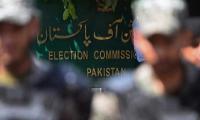Experts in internal security, while pointing out the recent criticism by US senators on some madaris in Pakistan, say that more is needed to be done on madrasa reforms after the approval of the National Action Plan (NAP). They say the government is yet to come out with an authentic and final figure about the number of madaris existing in the country. Also, little has been done for reforming their syllabus and controlling their finances.
An expert quoting a recent report said the number of madaris in Pakistan had crossed the figure of 35,000 from fewer than 300 since 1947. The report says “The madaris Conundrum — The state of religious education in Pakistan” refers to various sources about the number of students enrolled with the madaris. “One report claims that some 3.5 million students were enrolled with 35,337 madaris in Pakistan while another quotes the Auqaf authorities as saying the number of students was 26,131. Conflicting official figures put the number of madaris in Punjab at between 14,000 and 16,000. Similarly, the Ministry of Religious Affairs says there are 7,118 madaris in Sindh, while the provincial Auqaf department puts their number at a modest 2,800.”
Others say that today around 26,000 madaris are registered with Ittehad-e-Tanzeemat-e-Madaris, the group under which madaris of all major schools of thought are registered. Some government officials believe that 8,000-9,000 other madaris may be unregistered. Also, it has been claimed that from 2 to 5 percent of madaris are linked to extremism and radicalisation of students. Many of these madaris reportedly are also linked to militancy but their numbers could be even higher. The experts point out the madaris in the country and their alleged links with extremism and terrorism were now being openly discussed at US state institutions, which was not a good sign.
A US lawmaker Congressman Ed Royce, Chairman of the powerful House Foreign Relations Committee, recently went to the extent of calling some madaris in Pakistan as an infrastructure of hate. “Unless that infrastructure of hate is shut down, Pakistan will never win its struggle for internal peace,” said Royce during a Congressional hearing on Pakistan. He added: “It’s a phenomenon that frankly, it’s so frustrating, because what we see is the failure of the government, time and time again, to address issues that are in that government’s own best interests.”
Richard Olson, Special US Representative for Afghanistan and Pakistan, believes the growth of such madaris is due to the lack of primary education system in the country. He says: “The reason, in a way, that they exist and have become popular in Pakistan, if that’s the word, is because they do provide a free education. We think that what has to be done is there has to be further reform of the public education system. The public education system is not delivering in Pakistan and it has to be a viable alternative for parents who otherwise have no choice but to send their children to schools that are free and indeed where not only are they free, but food is provided.”
The Bloomberg View recently asserted: “The sorry state of public schools in Pakistan has encouraged a great proliferation of religious madaris — estimated to number anywhere from 18,000 to 33,000 and to graduate at least 200,000 students a year. These schools vary widely in quality and ideology, from mud-walled classrooms where children learn little but a few verses from the Quran to the sophisticated schools for women that Tashfeen Malik attended before taking part in the San Bernardino shooting, to outright Jihadi factories funded by militant groups.
Under the NAP formulated after the Peshawar massacre, authorities were supposed to map all madaris, audit their accounts and regulate any foreign funding. But progress has been slow.” While the world focuses on government actions with regard to the madaris reforms, it is clear that more is needed to be done for registration, regulations and reforms of madaris besides improving public education at all levels in the country. Also economic integration of madaris students remains a delusion in a society that requires skilled personnel of all hues.
PTI leader Azam Khan Swati. — The News/File ISLAMABAD: A local court on Tuesday confirmed the bail of PTI’s...
An exterior shot of the FIA headquarters. — Facebook/FileISLAMABAD: The Federal Investigation Agency , breaking a...
Sarhad Chamber of Commerce and Industry president Fuad Ishaq. — Facebook/Fuad Ishaq PESHAWAR: Sarhad Chamber of...
Sarfraz Bugti. — APP/FileQUETTA: Balochistan Chief Minister Sarfaraz Bugti has said that a committee is being formed...
Chairman Joint Chiefs of Staff Committee General Sahir Shamshad Mirza conferred civil awards to the eminent...
Former federal minister Fawad Chaudhary. — APP/FileMULTAN: Former Pakistan Tehreek-e-Insaf leader Fawad Chaudhry has...







